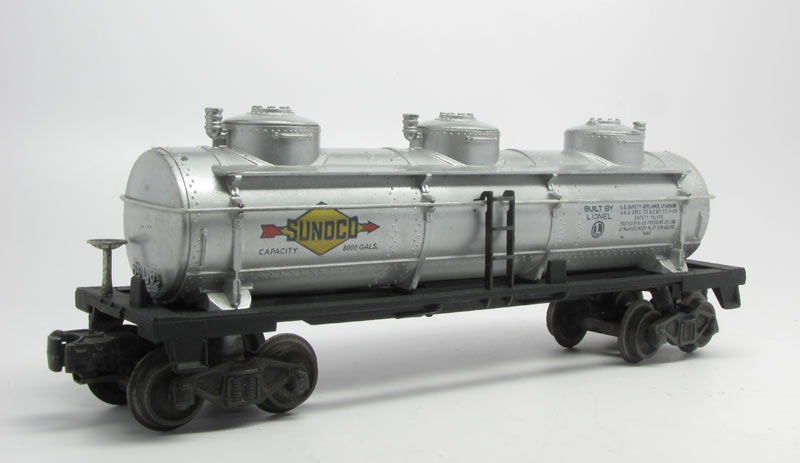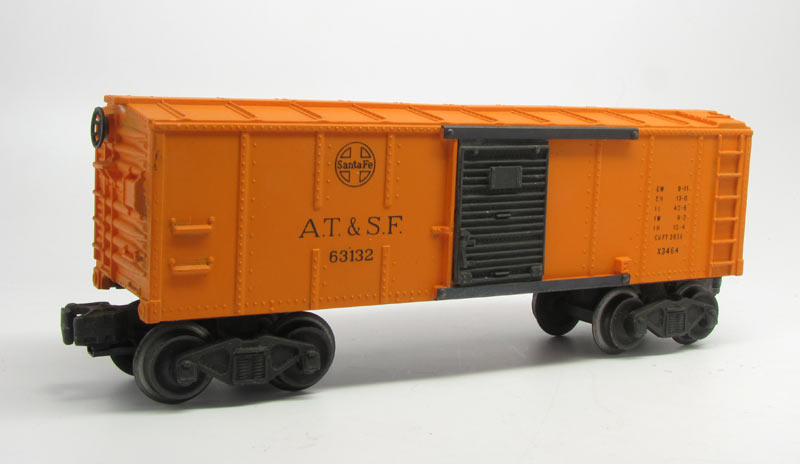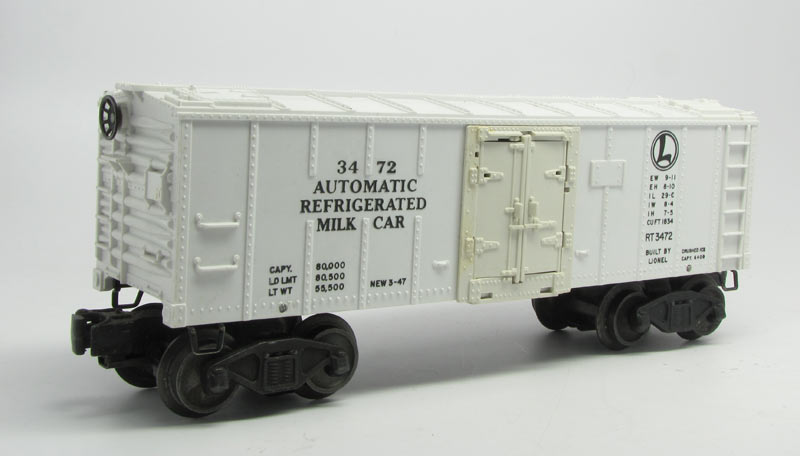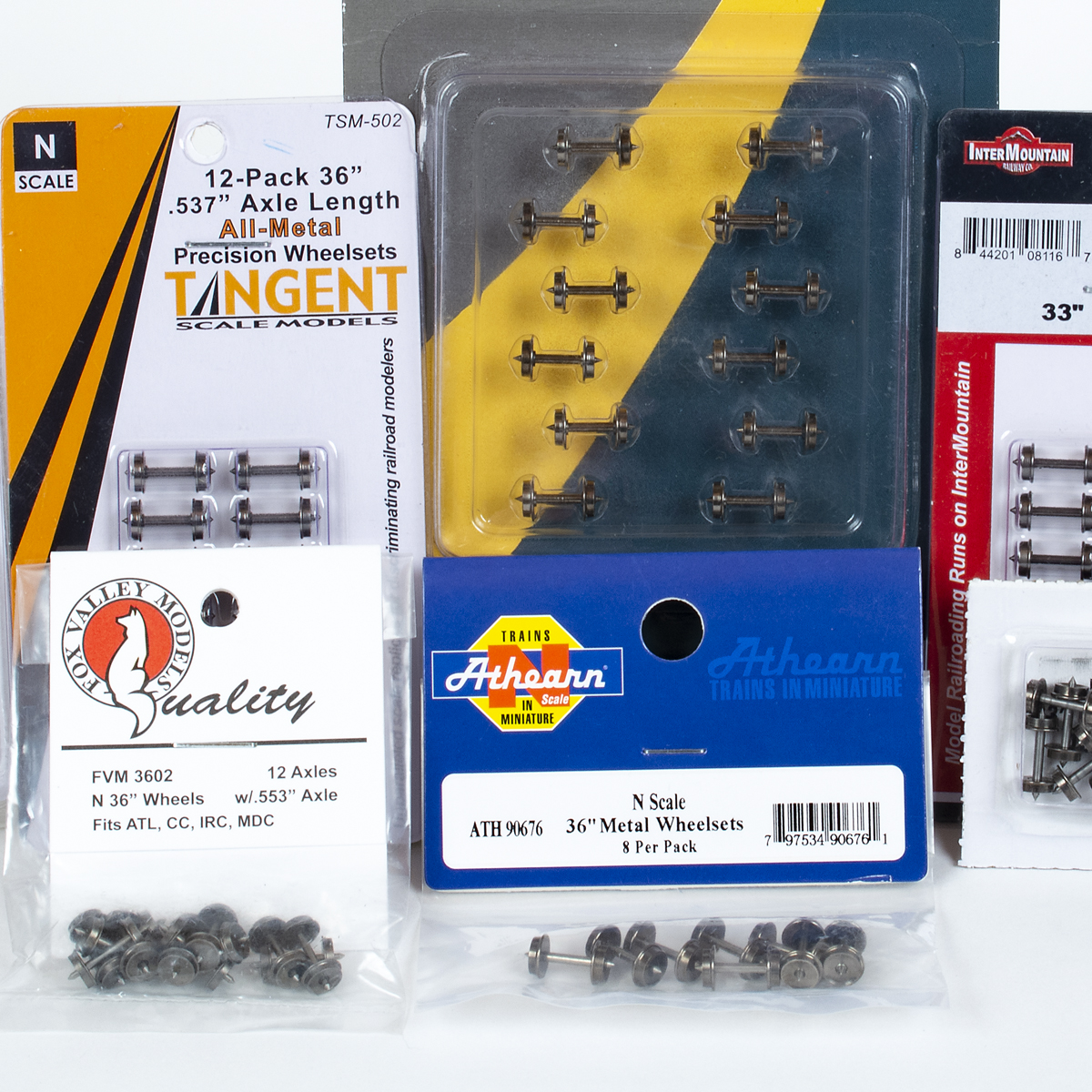Sunoco tank car rehab

Sunoco tank cars, like this No. 6415, are classic pieces and come in 1-, 2-, and 3-dome versions. The good news is that they’re appealing and not difficult to find. The bad news is that it’s nearly impossible to match postwar Lionel silver paint, and the rubber-stamped lettering is very fragile. It’s more practical to look for a car with a decent tank, but a scuffed or chipped frame.
After disassembling this car and rinsing the tank under warm water, I repainted the plastic frame on this car with semi-gloss back (be sure to use plastic-compatible paint). Then I sanded rut from the silver railing, touched up the ladders with a gun bluing pen, and reassembled. It will never be a collector piece, but it’s pretty good for a $12 car.
Lionel boxcars

Lionel plastic boxcars can be easy projects or impossible ones. If the car was painted at the factory, has heat-stamped lettering, and has only minor scuffs and paint chips, the odds are good that you can improve its appearance with a scrubbing and a little touch-up work. Cars with unpainted bodies, rubber-stamped lettering, or body damage (a missing corner or a cracked shell, for example) are usually not worth attempting.
Lionel’s 9 1/4-inch boxcars were transitional pieces between the metal cars of the prewar era and the later 6464-style cars, and that fact shows in their construction. In most cases, you’ll find that they have metal doors which are easy to repaint. If the doors have paint chips that will show through any new paint, either strip them with a chemical stripper meant for models, remove the paint with a small sandblaster, or replace them. Touching up the body is the same as for other painted cars. However, be careful disassembling these cars; the plastic can be very brittle.
This No. 3464 was a simple project. I scrubbed the body throughly using a soft toothbrush and Soft Scrub, and gave it a coat of clear flat paint. I also repainted the doors and put some gun blue on the door guides.
Lionel milk cars















I would agree that cars with broken body parts are not usually worth it, but I was able to fix a 3562-1 black operating barrel car with a broken end. I carefully cut off the end and replaced it with an end from a 9225 Conrail barrel car shell, which I got for next to nothing. After the glue set, I painted the ends and the top careful not to paint over the lettering, which was in good condition. The black matched well with the original parts. I then repainted the trough the same yellow color. All in all a nice looker, but of course not original.
The article and each of the comments got me going on my first Lionel cleaning project. I got an x2454 Baby Ruth box car, very similar to the AT&SF pictured above, as part of a dirty lot that included the tank car below as well. I was not concerned about damaging it so I took a chance using Goop hand cleaner with orange power and OMG what great results by just applying and rubbing lightly with my finger. I used a soft bristle tooth brush to get into corners, ladder rungs, etc and the car turned out great. I then moved on to a 2555 tank car with decals. One of the decals was already quite worn so I tried the same method on its panel rubbing very gently with my finger and rinsing with warm water. The decal was unaffected so I used the goop on the whole car a panel at a time and what magnificent results. It cut the grease film and splotches really well and the decals came up brightly. As always, you should test it on the car you plan to clean where the least amount of damage can occur. Looking forward to trying this on other cars needing some help.
All above coments are very helpful. When I Clean/ restore I start with a 1 inch paint brush warm water Palmolive liquid dish soap . Rinse with cool water. Be careful around decals and lettering. If results arent what you want repeat the process.
Mr Harvey O Weisse: would you please post a clinic on your parts moulding process or post the site where you learned it from. Pictures would be great.
Cleaning the older cars has been easy and a positive
experience.
I use Joy Dish Washing Soap a soft rag and a tooth
brush.
Use the brush only in the unlettered sections ex: roofs
dome tops etc.
Use your soft rag and fingers to lightly rub the
lettered areas and the wash with clear water and dry
with a soft cloth.
Have fun and enjoy your old clean trains !
I found the article interesting, however, I make rubber molds and recast broken steps and other parts that are damaged. They will not be collector pieces but once painted you can't tell the difference and they look great going around the track.
My Line is O-27. Purchased in 1946, with Lionel Yard switcher as Loco. Above ideas are appreciated and great ! I have some work to do!!
HOW DO I GET THE FRAME OFF OF THE 6045 GREY TWO DOME TANK CAR? NEED TO CHANGE MY ORIGINAL 6045 WITH OPERATING COUPLERS FOR A FRAME WITH A 6045 WITH NON OPERATING COUPLERS. THE ORIGINAL TANK CAR I HAVE IS TRASHED WITH FADED COLOR AND CHIPS ALL OVER. BUT THE FRAME WILL BE GREAT AFTER SANDING AND REPAINTING
I really like to Rejuvenate or redo the old trasted cars. I have a lot of fun and its the best part of the hobby.
The lettering on the postwar cars may not stand up to mild soap and water, so using caution is the best way to clean up these dirty gems.
I call it "dumpster diving" and you should see the great "finds" I found.
This is part of the hobby that is great, when you can take a klunker and make into a seviciable item.
A few tips for the Milk cars are warm soapy water, Peroxide, and finally a good bleaching. You need to be careful though as the refrigerated car not the automatic milk car has decals. I had to have the car repainted by a professional. A newbies mistake I am sure but I did it.
I have never done any restoration,but these helpful hintsmay be just the thing to get me started . Thank you
I have done this . . . created my own MOW cars with some gray paint and black dry transfer lettering/numbers. Looks pretty neat! I also found a beat up SW1 shell and painted it flat black with white NH decal and dry transfer lettering/numbering to pull & push the MOW fleet as needed. Lots of fun.
Has anyone ever tried to redo heat stamped lettering??
This article, and the online extras, helped inspire me to acquire some used rolling stock at the Lansing Model Railroad Club train show last weekend. I had a great time searching for bargains. For the price of 2 or 3 new O27 boxcars, I walked out with a grocery bag full of used treasures (treasures to me, anyways). Most ranged from slightly to moderately used and should clean up nice, for operating on my hi-rail layout. There were a couple clunker cabooses from which I can make one usable one. This was much more fun than just buying some new stuff, and now I own some classic (if common) rolling stock. Thanks, Terry!
Chester,
The surface of the shell on an unpainted milk car will be perfectly smooth between the ribs, and if you look very closely, you'll often see a slight pattern in the plastic. On a painted car, you may see some orange peel texture in the paint and you won't see a pattern.
Thanks for reading CTT,
Terry
How do you tell the difference between a painted and a non-painted Milk car?
I do this stuff all the time. Look for repairable cars under the tables at shows. With some Champ decals and different color paints, you can create a fleet of cheap tank cars that no one else has! One of the great fun things of the hobby!